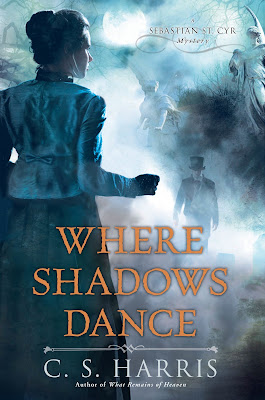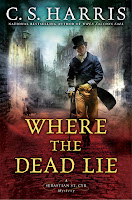
The publishing world is all aflutter this week, thanks to two contradictory and coincidentally timed occurrences.
On the one hand, NYT bestselling thriller writer Barry Eisler announced that he was walking away from a half-million dollar, two-book deal (that’s $250,000 a book) with St. Martin’s Press in order to self-publish in e-book format only. (I'd like to note without being catty that this contract represented a considerable step down from his previous contract with Random House.) Seems SMP wouldn’t concede to Eisler’s demands for a higher percentage of e-book royalties; Eisler got mad and walked.
Eisler has a long (emphasis on long) post about why he did this on his blog
here . He makes a lot of good points about the publishing industry—my personal favorite being that the industry is outsourcing much of its work, such as weeding through the slush pile (a task now performed by agents since most publishers refuse to accept unagented submissions) and promotion (we all know how much authors are expected to do their own self-promotion these days) while retaining the same share of profits. (Can I add copy writing to the list of out-sourced tasks?) And I do think it’s disgusting that authors get less than 15% in real terms of e-book sales. Since the cover price of e-books is lower than that of hardcovers, the rise in e-books is seriously hurting authors’ take home pay.
However, I’m not one of those (many, many) authors jumping up and down, applauding Eisler’s move and saying, “Oh, this is such a good model; let’s all dump our publishers and self-publish e-books for $2.99.” According to Eisler, authors who stand up for print publishing—which he derogatorily labels “legacy publishing”—are suffering from a form of Stockholm Syndrome. Personally, I think Eisler left several factors out of his calculation. First of all, he foresees the sales of his books continuing at the same pace ad infinitum. In my experience, this just doesn’t happen. There is a huge burst of sales when a book is first released, then the sales trickle off month by month. By my reckoning, he would need to sell something like 400 e-books a day for 300 days before breaking even. In order to achieve these sales, he will be lowering the price of his e-books, which of course he can do since he’ll be getting 70% of the price rather than only 14%. It’s been proven that e-books with lower prices get higher sales. However, if everyone lowers their price, that benefit will evaporate. And then "legacy published" authors will be left with 15% of that much lower price, which will work out to considerably less than 50 cents a book. Thanks a lot, Barry.
Secondly, not everyone has an e-reader. Not everyone wants an e-reader. Barry Eisler fans without readers will either have to go through a cumbersome POD rigmarole, or look for new authors. Which do you think is more likely?
Thirdly, while publishers don’t do as much promotion as we’d like them to, lead titles (like Eisler's) do get promoted. For one thing, publishers pay coop to put those books in the front of stores and in the newsagents in airports. I’ve heard that airport bookstores are getting unhappy because businessmen will walk into their stores, browse the newly released hardcovers, then walk away and download the e-book. Much easier than flying with a big hardcover. But if an author's new release isn't in Hudson’s News, those businessmen are going to pick up the newest release by some author who has stuck with the “legacy publishers.”
There are other factors at play here: I can’t see Hollywood or foreign publishers combing the ranks of self-published writers looking for their next blockbuster. Eisler, of course, already has foreign publishers, who will not doubt continue to print his books. Interesting he’s still willing to work with overseas “legacy publishers.” Of course, he needs them to pay for the translators. (You can read Eisler’s rant about the cover his French publisher gave one of his books
here. Now, I’ve complained about covers in the past, but this is just, well, wow.)
Ironically, the day after Eisler’s bombshell hit the news, Amanda Hocking, who recently created shockwaves by making over a million dollars on her self-published e-book young adult vampire series, signed a reported two million dollar contract (four books, roughly $500,000 each), with—double irony—St. Martin’s Press. Amanda, the guru of self-publishing in e-book format, evidently believes the “legacy publishers” still have something to offer her. You can read Amanda’s take on the controversy
here.
Update: Historical romance author Connie Brockway is also "going rogue" and is leaving Avon for the world of self-publishing. You can read her take on the subject
here.



















